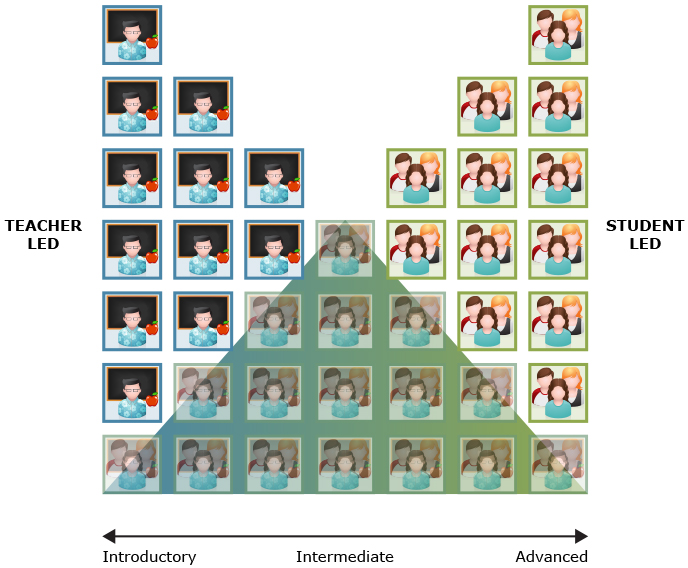Guide to Career and Technology Studies (CTS)
Alternative Delivery Strategies For CTS
Organizing for Learning
Multi-activity learning supports the concurrent delivery of different courses and/or learning tasks within a common time frame. The process empowers students, working individually or in groups, to assume responsibility for completing courses or course components within a specified time period.
In multi-activity learning, teacher and student share responsibility for managing the learning process. The process requires students to become self-directed learners who are able to manage their time, energy, and resources in effective ways. As students move from introductory to advanced levels and become more proficient in managing their learning, teachers may introduce a larger number of course and activity choices.

Multi-activity learning requires much structure and planning prior to implementation, as well as class time spent in orienting students to expectations and the learning process. The role of the teacher in multi-activity learning is to
- plan and develop a range of learning activities
- facilitate and support the learning process for individual students or groups of students
- evaluate student performance and learning outcomes
Some CTS courses can be delivered in regular classrooms, while others require the use of more specialized facilities. Schools are encouraged to use on- and off-campus learning environments in addressing student needs. Learning environments, whether on- or off-campus, must address the policies and guidelines for facilities, equipment, and safety as defined in the course parameters.
Schools may find it desirable to expand learning environments suited to the delivery of CTS programs by
- making innovative and effective use of existing facilities and equipment
- renovating existing facilities
- using facilities and equipment in the community
- sharing facilities and equipment in neighbouring schools and school systems
- using distance learning technologies and other alternative delivery strategies
CTS learning environments should provide opportunities for students to work individually or with others in a supportive atmosphere that reflects due diligence to health and safety. When possible, work areas for CTS should
- be flexible and multipurpose, supporting hands-on learning as well as research, note taking, and discussion
- enable teachers to readily observe, supervise, and assess student performance
- facilitate a shared and team approach to instructional delivery
- provide easy access to learning resources, computers, and other technology